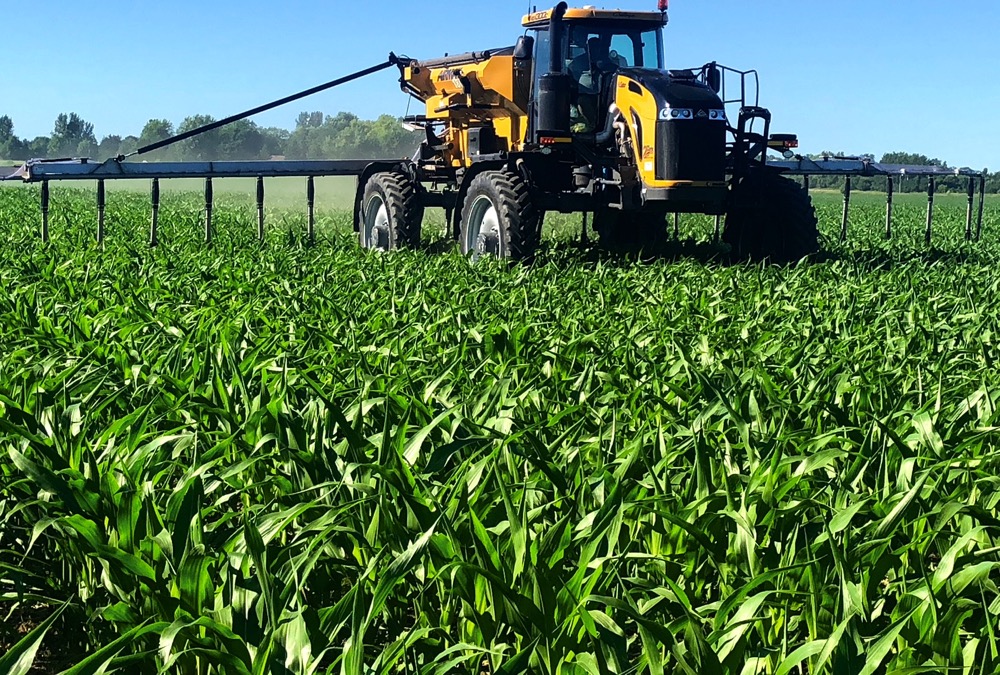The opening line was right on the money. It was at this winter’s Agrievolution Alliance conference in Germany, and it was the introduction to a report on global farm equipment markets: “The manufacturers of tractors and agricultural machines are satisfied with their current business situation.”
There’s a good reason why equipment manufacturers are “satisfied.” Agrievolution Alliance is a global network made up of the world’s leading agricultural machinery associations, and its member companies only need to look at their latest sales figures to smile.
Read Also

Farmland values: assumptions and realities
Where farmland values are headed and what decisions farmers should make
By the close of 2013, worldwide sales of farm equipment were expected to have increased by a full seven per cent over 2012, driving the total value of all the iron rolling out of the world’s ag equipment factories to roughly C$144 billion.
And, of course, 2012 was better than 2011, which was better than 2010, which was better than… well, you get the picture.
The question now is whether that “are satisfied” appraisal is about to become a “were satisfied.”
By late summer, North American equipment industry executives were seeing a significant cooling off in demand for new equipment. Still, expectations in corporate boardrooms are mixed. North America isn’t the only market on Earth, and not every CEO is forecasting a decline in their 2014 bonus.
“In October, we asked our 250 member companies around the world about their market conditions,” said conference chair Gerd Wiesendorfer of VDMA, the German Engineering Federation.
According to that survey, which was published by VDMA in a report entitled “Market Perspectives: 2014,” a full 45 per cent of manufacturers expect yet more growth for their brands in the first six months of this year, while 37 per cent expect to see demand remain exactly where it is now, and only 18 per cent are pessimistic, expecting sales to slip.
“Our industry is still in a good mood,” Wiesendorfer said. “But the future expectation has become a little more cautious compared to April (of 2013).”
Strangely, the most optimistic companies are the firms doing business in the U.S., where measured restraint was dominant just a few months ago.
“When we asked the companies about their turnover in their own market over the past three months, we came to the conclusion that markets have grown about five per cent over the last quarter,” said Wiesendorfer. “It was quite a surprising development.”
From the Grainews website: Buhler books record 2013 profit on near-record sales
Indeed, most manufacturers expect sales to grow in the first half of 2014, Wiesendorfer said. But the VDMA report suggests the year’s sales figures are bound to be highly variable, depending on what country you look at. Der Eilbote magazine in Germany, recently cited a survey that showed net farm income in that country shot up last year, with the average farmer raking in a respectable 62,900 euros (about C$94,350). “That’s a good six per cent more than the previous year,” reads the article. And those farmers have been spending some of that money on new gear. A survey conducted of visitors to Agritechnica in November reveals at least half of all German farmers intend to continue that spending.
Next door to them, French farmers, too, have been busy buying equipment. “France’s comparatively large agricultural sector is flourishing, and, at the moment, the country is Europe’s locomotive regarding demand for agricultural machinery,” reads VDMA’s report.
Across the English Channel, however, difficult growing seasons have made the situation quite different. 2013 spending on farm equipment in the U.K. was down roughly four per cent, according to a report in Farmers Weekly. Registrations of new tractors over 50 horsepower, it notes, dropped 10.4 per cent.
Back to the east, things aren’t too rosy in Russia, either. According to the Agricultural Equipment Manufacturers’ Association, sales there have tanked. By the end of November, sales of four-wheel drive tractors were in free fall, plummeting 30 per cent from the same time period a year earlier. Combine sales fell 34.4 per cent, and rigid-frame tractors above 100 horsepower dipped 25.2 per cent.
VDMA’s report blames much of the trouble there on a continuing credit crunch. As well, foreign brands there are facing another problem.
Combine imports into Russia had been subject to a stiff 27.5 per cent tariff levied in February. By July, that duty was suspended, but it is expected to be replaced by an import quota this year. Couple that with a 15 per cent subsidy paid to some farmers who purchase equipment built in the Russian Federation, and imports have suffered.
Speaking at an awards ceremony during Agritechnica, a representative of VDMA boldly called the tariffs and subsidies the most striking violations of WTO rules he’s ever seen.
Still, politics are less of an issue in other markets. “Political conditions in very many regions of the world are very positive right now,” said Charlie O’Brien, another member of the Agrievolution panel chairing the press conference.
Back on this continent, things were astonishingly good, especially in the U.S., where sales of rigid-frame tractors above 100 horsepower grew another 17.6 per cent and combines by 9.8 per cent.
However, the VDMA study puts a big caution sign on those numbers. “It is assumed that the long-standing, agricultural machinery market-boom phase in the U.S., which exceeded all expectations, will be over by 2014,” it reads. “Dramatic downturns, however, are not expected.”
Here, in Canada, farmers were a little more cautious with their spending last year, but the sales curve was still trending upward, with 13 per cent more rigid-frame tractors finding homes on farms, while combine and four-wheel drive tractor sales both eased by a hair.
For next year, though, manufacturers with a global footprint are still counting on sales in China to prop up big dividends for shareholders.
“The growth in China continues,” said Wiesendorfer. “Only for 24 per cent of the companies have their sales gone down in China. For the other companies, sales went up. Agricultural machinery markets (in China) have gown 20 to 30 per cent each year in the past five years. Now, we see a moderate growth; the opinion of the Chinese (manufacturers) association was 10 to 15 per cent growth (this year).”
“Also, Japan is quite amazing,” Weisendorfer said. “The agricultural machinery market in Japan has gone through a deep recession in the last six to seven years. In the next one and one-half years we expect to see some upswing in the market.”
Most notably, Brazil turned out to be the runaway market for manufacturers in 2013. There are five million farms in that country, and 85 per cent are family operations with an average size of 40 acres. A government support program has helped many of them to buy their first tractor, leading to a surge in demand for models under 75 horsepower.
An incredible 65,000 tractors were sold there in 2013, a 15 per cent jump over the previous record. Combine sales soared by 56 per cent. Those numbers aren’t expected to continue into 2014, but they point to an increase in mechanization across the country that is bound to sustain higher equipment sales volumes in the future.
















